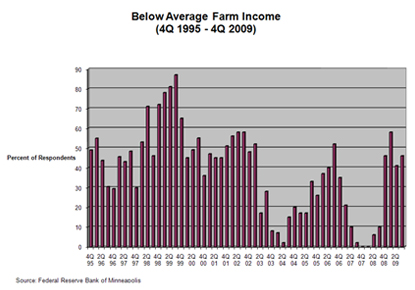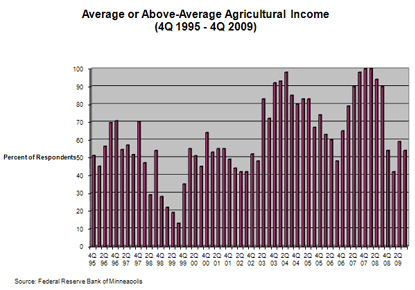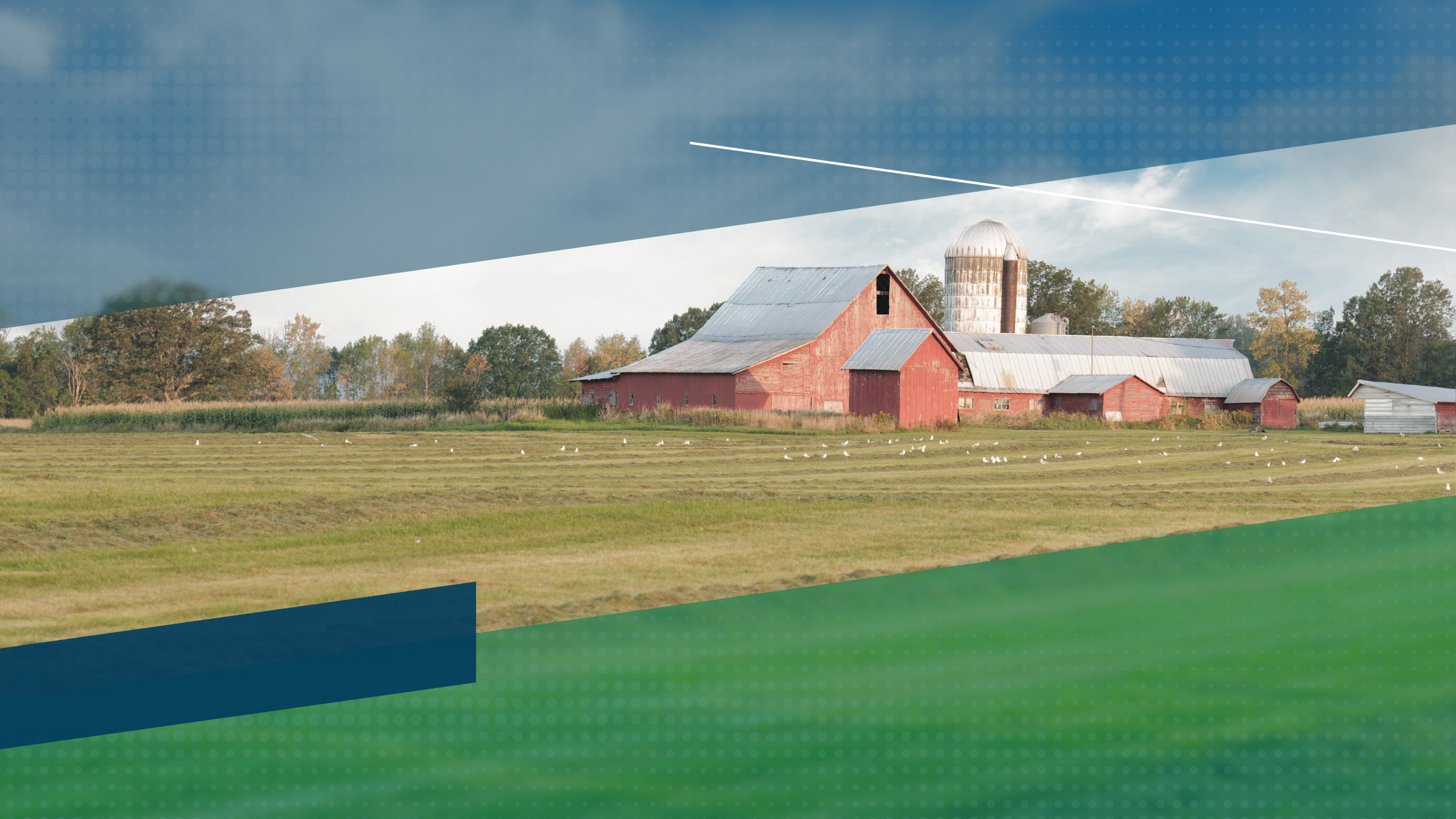A wet fall increased crop drying costs and delayed harvests. Profits and capital spending fell slightly for ag customers, according to lenders responding to the Minneapolis Fed’s fourth-quarter (January) agricultural credit conditions survey. More farmers and ranchers delayed repayment and extended loans. Lenders have bountiful funds, but loan demand was flat and collateral requirements increased. Land prices and cash rents were relatively stable during the quarter. Interest rates on loans did not change much from the third quarter. The outlook for the first quarter of 2010 is subdued. Farm income, capital expenditures and household spending are expected to fall.
Farm income, household spending and capital investment
“Unharvested corn crops and quality of corn that has been harvested is of concern,” commented a South Dakota lender. This may have affected income, as 46 percent of lenders indicated that farm income was down, while 21 percent reported increased income. High input costs and low selling prices may have negatively affected cattle and dairy producers. This downturn in income is especially evident in livestock regions, such as Montana and Wisconsin. The response by many ag producers was to cut back on capital investment and household spending.
Loan repayments and renewals
As profits slid, some agricultural producers delayed repayments or extended loans. Nearly a quarter of the lenders reported lower levels of loan repayments, while 13 percent reported higher levels. Meanwhile, about a quarter of lenders reported more extensions and only 7 percent reported fewer renewals or extensions. “Some livestock loans are under stress,” noted a Minnesota banker.
Demand for loans, required collateral and interest rates
Loan demand was flat. Nearly equal numbers of lenders reported that loans had increased as had decreased. However, availability of funds has increased, and no respondents indicated that a loan was refused due to a shortage of funds. Meanwhile, fixed interest rates did not change from the third quarter, while variable rate operating and machinery loans decreased 20 and 10 basis points, respectively.
Cash rents and land values
Little change was noted in cash rents and land values. Average cash rents for nonirrigated farmland in the district were up about 2 percent from a year ago, cash rents for irrigated farmland were down around 1 percent and cash rents for ranchland were up 2 percent. Nonirrigated farmland values were unchanged, irrigated farmland prices were up 2 percent and ranchland prices dropped 5 percent. However, land prices in Wisconsin dropped 7 percent for nonirrigated farmland, 5 percent for irrigated farmland and 14 percent for ranchland. (Not only can prices vary from state to state, but they can also vary from parcel to parcel.) For more detailed information on agricultural prices, see the Minnesota Land Economics Web site.
Outlook
Conditions in the area are excessively wet, which will continue to impact the ability to harvest the balance of the corn crop and prevent timely spring planting, a South Dakota lender noted. Farmers’ income may drop further in the first quarter of 2010, according to 37 percent of lenders. “Milk prices are on the rise,” a Wisconsin lender said. Over half of the Wisconsin respondents expect increased farm income during the first quarter. Overall capital expenditures and household spending are expected to decrease. Meanwhile, loan demand and renewals are expected to increase, as are collateral requirements.
Appendices:







